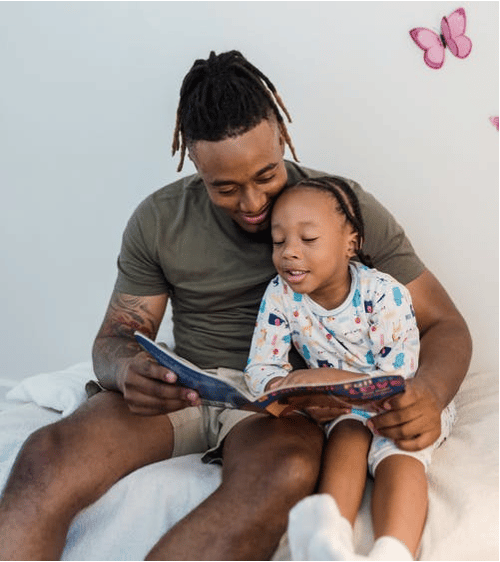6 Reading Strategies for Developing Readers
What does it actually mean to be a developing reader?
If you’re a parent or educator, the only thing you want - and need - is a clear answer to support your student’s reading development. To clarify this common-yet-confusing question, we’ll define the most common phases of reading development and outline 6 evidence-based reading strategies to support developing readers.

Difference Between Developing Vs. Emergent Readers
Literacy experts often use the term emergent reader to describe readers who cannot yet read independently but are gradually working toward literacy. In this way, emergent readers - as well as students in other developmental phases of reading - can all be considered developing readers, as each one is developing the skills to read confidently and independently. Reading experts make varying levels of distinction between the terms developing reader vs. emergent reader, but it can be argued that both phrases describe a reader who is:
- Learning the basic concepts of reading, such as decoding, phonics, the alphabet, and high-frequency and sight words that will boost their reading fluency
- Progressing from picture-heavy books to texts with longer sentences and more complex stories
- Gaining more control of the reading process
Whether a reader is just learning phonics or learning how to write essays about theoretical texts, all developing readers are united in the quest to achieve the next level of reading mastery.

Stages of Reading Developing
Every reader is different, but literacy experts typically break the process of reading into 5 developmental stages:
1. Emergent Readers or Emergent Pre-Reader
Depending on the source, the term “emergent reader” and “developing reader” may be used interchangeably. In the name of clarity, we define an emergent reader as a student who cannot yet read independently but is gradually acquiring the skills of literacy. Signs of an emergent reader include:
- Recognition of high-frequency or sight words in their everyday environment
- Writing in scribbles: while they may not know how to write actual words, they understand that writing communicates important information
- A desire to read and even memorize their favorite books
2. Novice Readers
Like emergent readers, novice readers can also be considered developing readers. Most novice readers are working on alphabetic fluency, solidifying the relationship between letters and sounds, and reading aloud to understand the connection between spoken and written words.
3. Decoding Readers
Decoding readers are still reading simple stories, but much more smoothly than in prior stages of reading development. These readers must balance the acts of reading thoroughly and at a fluent rate. Because reading too slowly or too quickly can impede their comprehension, decoding readers are focused on decoding words at a rate that maintains their momentum and interest in a book.
4. Fluent Readers
The long-awaited stage of reading fluency marks a key milestone for developing readers. Fluent readers readily decode words and choose texts that align with their interests and higher-level reading skills. They are constantly building a collection of knowledge that helps them tackle new words and genres. Because many readers achieve fluency at a young age (typically 9-15 years old), they still need to self-monitor their comprehension through reflective essays, class discussions, and other tools.
5. Expert Readers
Compared to developing readers, expert readers tackle texts from a wide range of authors, viewpoints, and genres. They pay close attention to & think critically about what they’re reading. While this is the “last” stage of literacy development, any reading teacher knows that as long as one continues reading books, it’s virtually impossible to ever “end” reading development.

6 Reading Strategies for Developing Readers
Becoming an expert reader takes time, consistency, and years of life experience. That said, parents and educators can jumpstart the journey with these 6 reading strategies for developing readers:
1. Celebrate interests and identities.
From Day 1, developing readers should be encouraged to read texts that reflect (and expand!) their experiences and interests. Fostering a diverse library of books is key to their development and understanding of the world around them.
2. Keep a schedule.
For developing readers, consistency is key. Even on busy days, allocating just 10-15 minutes reinforces the importance of reading. Designating a “book nook” or family reading time makes reading more special - and less stressful!
3. Try reading aloud as a group.
Compared to old-fashioned popcorn reading, choral reading invites the entire class and teacher to read aloud together. This removes the spotlight from individual readers while helping students connect written and spoken words.
4. Same book, different day.
Studies show that reading the same text multiple times throughout the week, whether alone or in pairs, can significantly improve elementary students’ word pronunciation and comprehension. Instead of forcing students to move on from a beloved text, rereading it multiple times - aloud, alone, and in groups - can actually enhance their reading development.
5. Use reading technology.
Especially for students with dyslexia and other reading challenges, technology-based strategies such as ear-reading - listening to an audiobook while reading - can be transformative for developing readers.
6. Visit the library!
In addition to audio books and other assistive reading technology, your local library may host author events, giveaways, and other activities for developing readers that will ignite and sustain their love of reading.

Take-Aways:
- While the definition of “developing reader” is debatable, we define a developing reader as anyone who is working toward the goal of reading a wide range of complex texts: fluently, confidently, and independently!
- Five stages of reading development were originally identified by Maryanne Wolf (2008) in her book Proust and the Squid: The Story and Science of the Reading Brain. While the science of reading is always evolving, many reading experts agree on this rough breakdown of reading development.
- Modern technology and local resources make it possible for parents and educators to support developing readers with 6 evidence-based strategies.
Start Teaching Reading for Free Now!
Access Level 1’s four interactive stories and the accompanying supplemental resources to teach elementary students how to read. No credit card is needed. Join the 42,635 teachers and students using our reading program.
